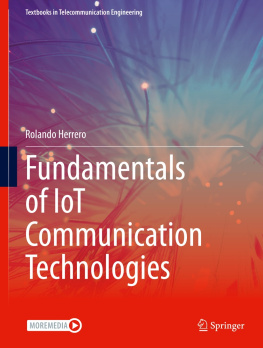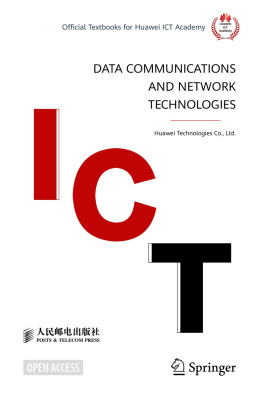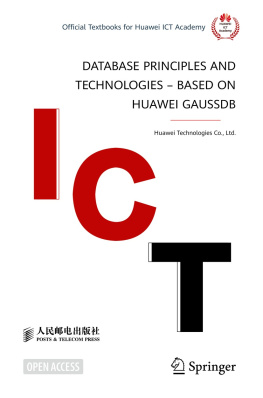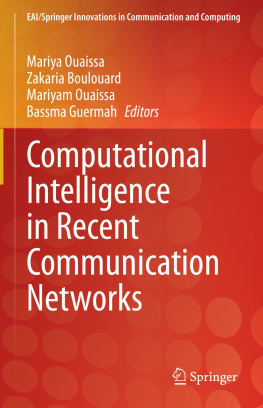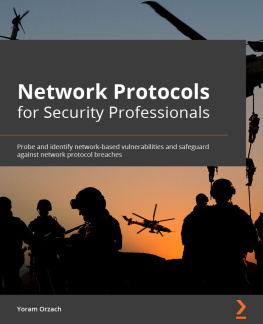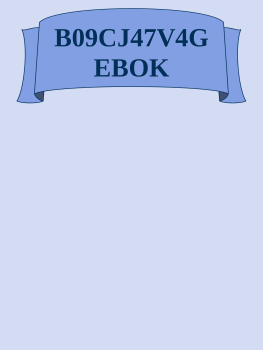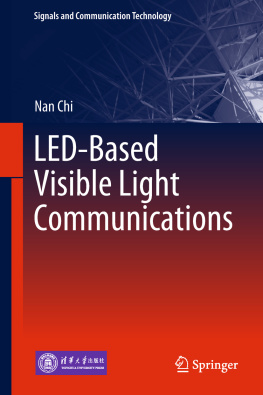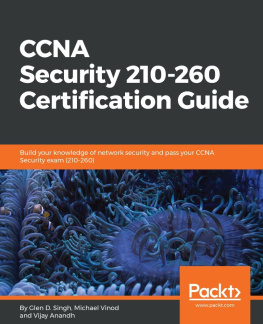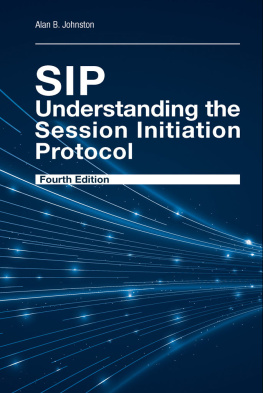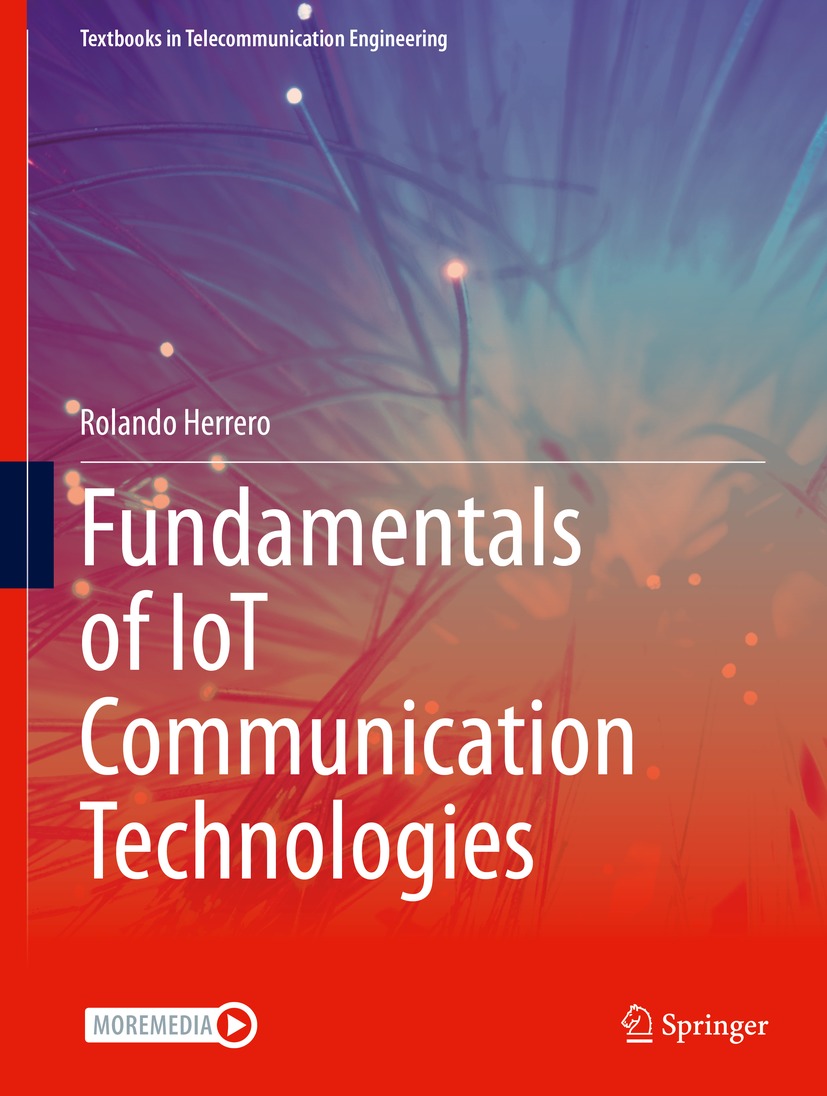Textbooks in Telecommunication Engineering
Series Editor
Tarek S. El-Bawab
Professor and Dean, School of Engineering, American University of Nigeria, Nigeria
Telecommunications have evolved to embrace almost all aspects of our everyday life, including education, research, health care, business, banking, entertainment, space, remote sensing, meteorology, defense, homeland security, and social media, among others.With such progress in Telecom, it became evident that specialized telecommunication engineering education programs are necessary to accelerate the pace of advancement in this field. These programs will focus on network science and engineering; have curricula, labs, and textbooks of their own; and should prepare future engineers and researchers for several emerging challenges. The IEEE Communications Societys Telecommunication Engineering Education (TEE) movement, led by Tarek S. El-Bawab, resulted in recognition of this field by the Accreditation Board for Engineering and Technology (ABET), November 1, 2014. The Springers Series Textbooks in Telecommunication Engineering capitalizes on this milestone, and aims at designing, developing, and promoting high-quality textbooks to fulfill the teaching and research needs of this discipline, and those of related university curricula. The goal is to do so at both the undergraduate and graduate levels, and globally. The new series will supplement todays literature with modern and innovative telecommunication engineering textbooks and will make inroads in areas of network science and engineeringwhere textbooks have been largelymissing. The series aims at producing high-quality volumes featuring interactive content; innovative presentationmedia; classroom materials for students and professors; and dedicated websites. Book proposals are solicited in all topics of telecommunication engineering including, but not limited to: network architecture and protocols; traffic engineering; telecommunication signaling and control; network availability, reliability, protection, and restoration; network management; network security; network design, measurements, and modeling; broadband access; MSO/cable networks; VoIP and IPTV; transmission media and systems; switching and routing (from legacy to next-generation paradigms); telecommunication software; wireless communication systems; wireless, cellular and personal networks; satellite and space communications and networks; optical communications and networks; free-space optical communications; cognitive communications and networks; green communications and networks; heterogeneous networks; dynamic networks; storage networks; ad hoc and sensor networks; social networks; software defined networks; interactive and multimedia communications and networks; network applications and services; e-health; e-business; big data; Internet of things; telecom economics and business; telecom regulation and standardization; and telecommunication labs of all kinds. Proposals of interest should suggest textbooks that can be used to design university courses, either in full or in part. They should focus on recent advances in the field while capturing legacy principles that are necessary for students to understand the bases of the discipline and appreciate its evolution trends. Books in this series will provide high-quality illustrations, examples, problems and case studies. For further information, please contact: Dr. Tarek S. El-Bawab, Series Editor, Professor and Dean, School of Engineering, American University of Nigeria, telbawab@ieee.org ; or Mary James, Senior Editor, Springer, mary.james@springer.com .
More information about this series at http://www.springer.com/series/13835
Rolando Herrero
Northeastern University, Boston, MA, USA
ISSN 2524-4345 e-ISSN 2524-4353
Textbooks in Telecommunication Engineering
ISBN 978-3-030-70079-9 e-ISBN 978-3-030-70080-5
https://doi.org/10.1007/978-3-030-70080-5
The Editor(s) (if applicable) and The Author(s), under exclusive license to Springer Nature Switzerland AG 2022
The solutions and slides for this book can be found at https://www.springer.com/us/book/9783030700805
This work is subject to copyright. All rights are solely and exclusively licensed by the Publisher, whether the whole or part of the material is concerned, specifically the rights of translation, reprinting, reuse of illustrations, recitation, broadcasting, reproduction on microfilms or in any other physical way, and transmission or information storage and retrieval, electronic adaptation, computer software, or by similar or dissimilar methodology now known or hereafter developed.
The use of general descriptive names, registered names, trademarks, service marks, etc. in this publication does not imply, even in the absence of a specific statement, that such names are exempt from the relevant protective laws and regulations and therefore free for general use.
The publisher, the authors and the editors are safe to assume that the advice and information in this book are believed to be true and accurate at the date of publication. Neither the publisher nor the authors or the editors give a warranty, expressed or implied, with respect to the material contained herein or for any errors or omissions that may have been made. The publisher remains neutral with regard to jurisdictional claims in published maps and institutional affiliations.
This Springer imprint is published by the registered company Springer Nature Switzerland AG
The registered company address is: Gewerbestrasse 11, 6330 Cham, Switzerland
Preface
What Is This Book About?
The Internet of Things (IoT) is often described as a group of standardized technologies, systems, protocols, and design principles associated with Internet-connected entities and things that interact with the physical environment. Although IoT relies on many moving parts, a basic classification can serve to identify three main components: (1) devices that interact with the physical environment, (2) applications that perform analytics and extract knowledge from devices in order to make decisions, and (3) Internet-based communication that provides the glue that ties these two other components together. This book is about this complex latter component.
Topologies of most IoT architectures are affected by power and computational complexity constraints that render most traditional communication mechanisms ineffective. IoT communication technologies attempt to overcome these problems by relying on several overlapping standard and non-standard protocols designed and developed by multiple organizations ranging from industry consortia to standardization bodies. This book explores many of these state-of-the-art protocols and maps them to functionality associated with the different layers of the well-known layered architectures with special focus on their interaction. Moreover, the book introduces these mechanisms from a perspective of protocol stacks that support diverse IoT solutions and use cases like home automation or Industrial IoT ( IIoT ). Additionally, other aspects of IoT communication technologies like routing, security, and resource management are also explored.

